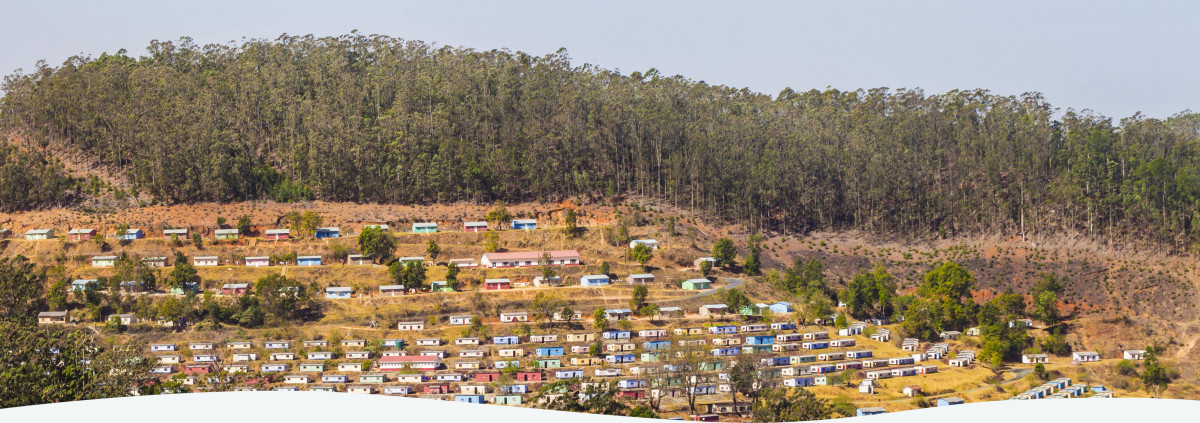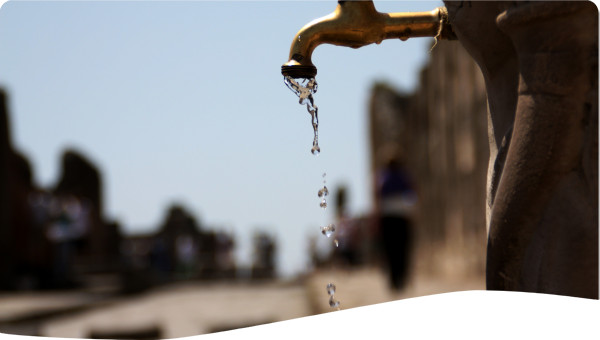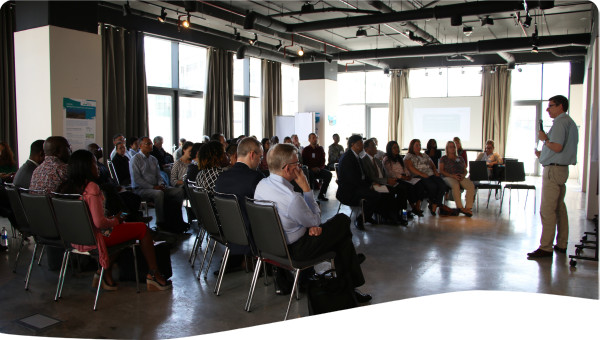To meet demand, Lesotho's water sector is undertaking institutional reforms and tackling financial and technical constraints. Action was initiated through a study conducted in four phases including data collection, development options, financing strategy and integration of the findings. The project was carried out through capacity building activities in cooperation with several stakeholders. Predominantly, this case study illustrates the importance of combining data from several authorities into one consistent format.
To meet demand, the water sector of Lesotho is undertaking institutional reforms and tackling financial and technical constraints. The government recognised the need to strengthen strategic financial planning and increase sector efficiency and effectiveness. A Financial Planning study was launched by the Ministry of Natural Resources in partnership with the Ministry of Finance and Development of Lesotho. The objective of the Financial Planning study was to improve financial planning and strengthen the Sector Wide Approach (SWAp) in the water supply and sanitation sector.
This initiative is supported by the Organization for Economic Cooperation and Development (OECD) and European Union Water Initiative/ Finance Working Group. A strategic approach to financial planning will strengthen the SWAP in the sector by:
- Providing a transparent and long-term overview of the overall financial needs of the Lesotho water sector to meet targets which will bring Lesotho closer to MDGs
- Developing tools to enable the sector to better manage any financial gaps through policy dialogue on sector strategies
- Embedding the planning tools and methods into the sector financial planning routines closely linked to the MTEF process.
At the same time these efforts will contribute to global efforts to develop generic tools for strategic financial planning by testing tools such as FEASIBLE and will also test paradigms for country specific tools.
The Financial Planning study was conducted in four phases including data collection, development options, financing strategy and integration of findings. The methodology used consisted of three interrelated processes; an expenditure forecast, a derivation of available sector finance and a derivation of financing gaps including a process for adjusting demand and supply factors for managing the gap in finance.
The idea behind the method is that the difference between the expenditure forecast to meet targets and the projection of available finance together result in a finance gap (or surplus). This gap could then be managed by changing variables such as coverage targets, the technology mix or new sources of funds (e.g. from tariffs or taxes) within the demand and supply side.
The methodology used in the study allowed for different scenarios to be developed and provides evidence-based policy decision support. In the case of Lesotho four development scenarios were analysed based on the poverty reduction strategies (PRSP), the Vision 2020 and the MDG targets.
The planning tools used in the project were “FEASIBLE” and the “Strategic Financial Planning Model” (SFPM).
FEASIBLE is a computerized decision support tool which enables analysis of water supply, waste-water collection and treatment, and municipal solid waste management. FEASIBLE calculates the projected expenditure need based on data on the existing situation and targets, and the expenditure needs for a number of variables incorporated in the model.
The SFPM is a tool for estimating the financing needs versus available funding in the water and sanitation services for different development and policy scenarios. In the Financial Planning study the SFPM was designed to specifically describe the water sector in Lesotho and is now used as a guide for developing sector strategies. The methodology and tools used have been designed for the water supply and sanitation sector and would need to be modified to cover financing for water resources management.
To ensure that the planning tools and methodology became an integrated part of the planning process in the water sector, capacity development was an important part of the project. The project was carried out in cooperation with several stakeholders and capacity development activities were numerous, including workshops and training sessions on the design and use of the planning tools.
The Financial Planning study, for the first time, combined data from several authorities into one consistent format. The study further developed a methodology and procedures for providing baseline data for water and sanitation coverage. When the four development scenarios for Lesotho were analysed (Business as usual; High Growth with Urban and Industrial Focus; High Growth with Rural Development Focus; Low Growth), possible measures to bridge the financing gaps could be developed based on real evidence. Within the four development scenarios there can be specific development options to be considered to improve the water services and/or the financing of the sector.
The analysis and discussions in the TWG has identified some measures that could improve the sector performance and increase the likelihood of achieving targets. The analysis provided eight main insights concerning funding, cost recovery in urban systems, access to urban water, functionality of rural water, planning of bulk water systems, on-site sanitation, sewerage, and water service planning.
Based on the long list of possible improvements in the water sector, the TWG has identified the following two priority projects to be considered:
- Connections in urban areas: Action for improving WASA metering and connection rates that could include calibration/replacement of meters; strategy on pre-paid meters; connection fees and tariffs and improving the customer data base and network mapping.
- Free Basic Water: develop a strategy for how to implement the free basic water policy principle in rural and urban areas including developing methodology for how to identify the vulnerable households
The scenarios analysed and the development options identified are now used by the Lesotho water sector. The planning tools are used for determining coverage estimates and for guiding the annual preparation of Budget Framework Papers.
Moreover, the Financial Planning study identified actions which enhance the planning tools and ensure integration of the strategic financial planning methodology into the planning and budgeting process in the water sector institutions. The study made significant contributions to more effective use of finance. The FEASIBLE model was found to be complex and data demanding although the basic methodology was sound. It was thus considered not realistic to develop a generic model to cover all the diverse situations for water and sanitation in Africa. It was concluded that Strategic Financial Planning was critical for more effective use of funds and to fill the finance gap and the methodology used was very useful for the analysis.
The development of the planning tools has been valued in the water sector since it has for the first time combined data in a consistent format and developed the methodology for providing good baseline data for water and sanitation coverage.
Considerations for the financing of the water sector (described in the four scenarios) and the development options are used by the water sector and will form an important input into the ongoing formulation of the interim strategy for water services.
The COW will continue to use the planning tools for determining coverage estimates; for guiding the annual preparation of Budget Framework Papers for soliciting funding; in high level discussions on tariff increases and subsidies to the water and sanitation sector.
 Case studies
Case studies


